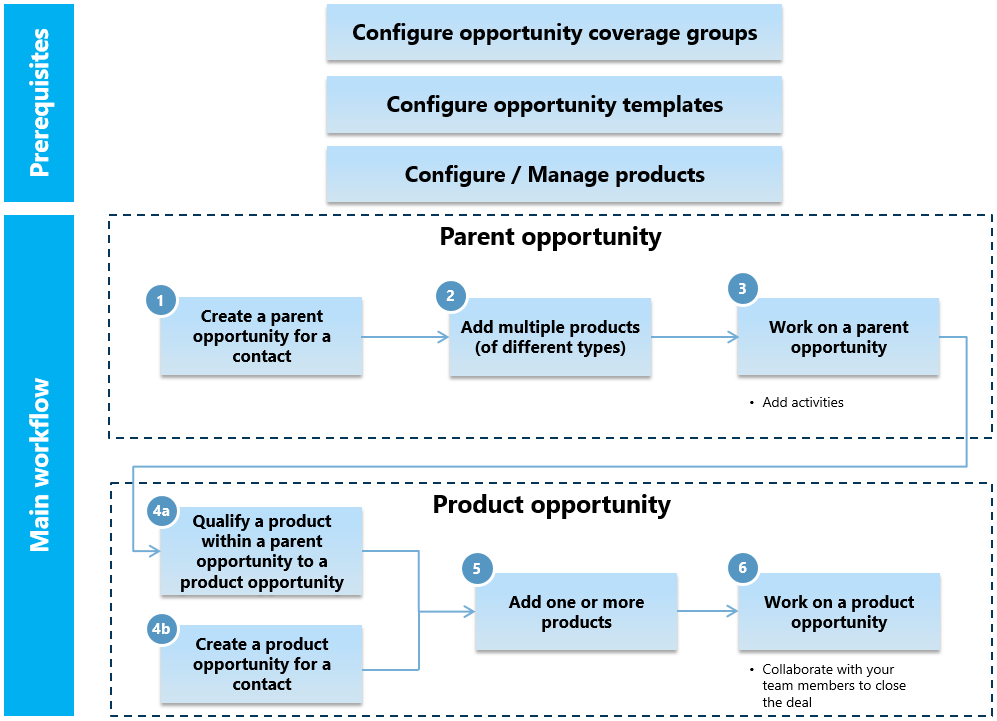Opportunities
An opportunity captures and tracks a potential business opportunity to sell a product to a client.
Use opportunities to track specific products or services that create further upselling opportunities, for example, a new account or an outbound referral. Avoid using them to track interests, tasks, or potential inbound referrals.
Two types of opportunities are used to track these potential sales, from initial planning through various stages, until it is closed:
- Parent Opportunities
Use parent opportunities to create initial lists of products for potential sale to clients. In general practice, a single parent opportunity will have multiple products associated with it. As you engage with your clients, you can use the products in the parent opportunity to create and track the progress of individual product opportunities. Product Opportunities
Each product opportunity represents an engagement with a client around the potential sale of a specific product.While it is possible to associate multiple products with a product opportunity, it is general practice, and default behavior, to associate only one product with each product opportunity.
Each opportunity is based on an opportunity template, which defines the type of entity that the opportunity can be offered to, and the stages that define the life cycle of that opportunity. The template might also include a set of related default activities such as tasks, schedule items, or documents. The details of each template are defined by your organization and implemented by an application administrator. In this document, the following stages may be referred to in examples:
- Initial
- Planning and research
- Progressed
- Closed
Opportunity management process
The general process of using opportunities is illustrated in the following diagram:
Opportunity configuration
This part of the process is carried out by an application administrator within your organization. The administrator defines the parent and product opportunity templates, the coverage groups, and the products available in the Opportunity workspace.
Parent opportunity workflow
When working with opportunities, you will generally move through three phases:
- Create one or more parent opportunities for a contact.
- Add one or more products to the parent opportunity. Each product represents a product or service that you hope to sell to that contact.
- Create any notes or activities related to the opportunity and product, and begin your engagement with the contact. During this phase, you can identify the specific product offerings that you will move forward negotiating with the client.
Product opportunity workflow
As you begin to identify or qualify the specific products within the parent opportunity that you will work to negotiate with the client, you will move into the Product opportunity part of the workflow:
- If you are moving forward with a product under the parent opportunity, create a product opportunity based on that product. You can also "deactivate" products that you will not pursue.
- For those product opportunities that you create, you can add any activities that need to take place as you move it through its stages.
- Work with your team members to close the deal defined by the opportunity.

